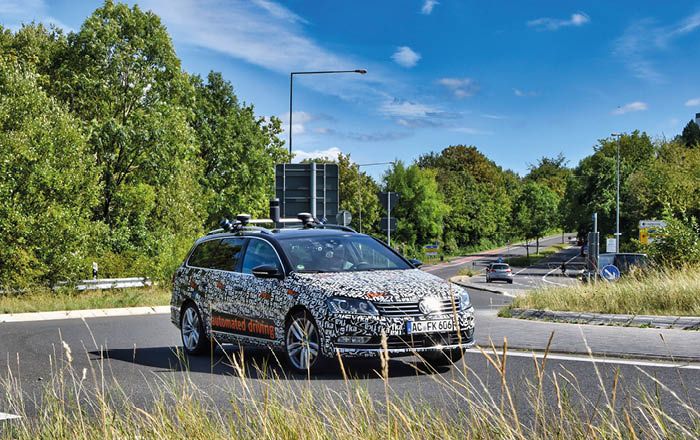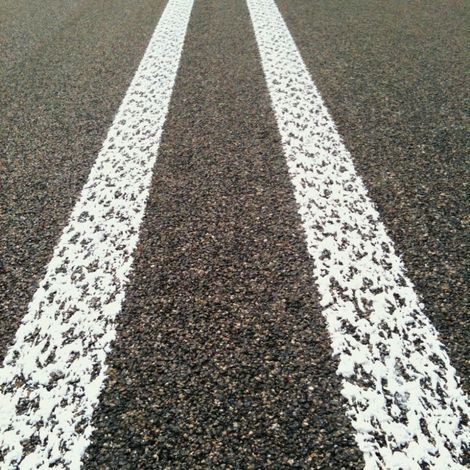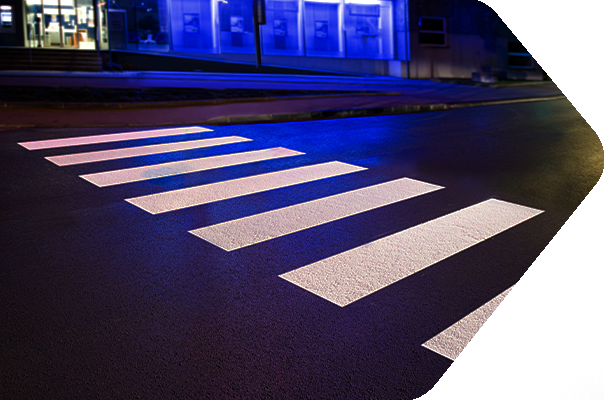How Road Markings Can Influence Machine Recognition
New research findings confirm: Material properties are crucial when detecting road markings. Optimised day and night visibility have different levels of importance.
With the rapid development of automated vehicles, road markings are becoming increasingly important as the interface between road infrastructure and vehicle systems. But what factors play a role in ensuring that machine systems can reliably recognise the road markings? This was the question addressed by a research project involving SWARCO Road Marking Systems. The results of this project will soon be published in the Journal of Traffic and Transportation Engineering.

The measurement of the 64-kilometre test section in Germany was carried out using special test vehicles. An exciting scientific article on this topic is to be published soon, which will look at different factors involved in digital detection of road markings.
Copyright: fka GmbH
A perfect test track
The research team collected data on various longitudinal road markings on a 64-kilometre stretch of a motorway in northern Germany. Using test vehicles equipped with cameras and LiDAR systems, the team analysed the digital detectability of the road markings under everyday conditions over the course of a year.
The selected test track offered ideal conditions for the measurements: new and worn-out markings, roadwork sites, different road surfaces and changing marking systems provided a colourful mix of road markings. With the help of tens of thousands of individual measurements and algorithms for evaluating machine detection, extensive data sets were created and analysed. The goal was to examine the correlation between defined visibility values such as retroreflection (RL) and daylight visibility (QD) as well as machine detectability. The research project was carried out by the Institute for Road Engineering at RWTH Aachen.
Material properties and their impact
The research results from this project, which will be published in the near future, indicate that the choice of road marking material and the detection technologies used are crucial for the machine detectability of road markings.
Retroreflection based on the reflection of light due to micro glass beads embedded in the road marking proved to be a decisive factor for machine detection at night. Detection in camera-based systems benefits greatly from this effect, as increased retroreflection maximises the contrast between the road surface and the marking – especially in dry conditions. LiDAR systems also benefit from high RL values in dry and moist conditions, but show significant weaknesses on wet roads.
Limited influence of daylight visibility
In contrast, the daylight visibility QD proved to be an unreliable indicator for machine detection. A saturation effect at high QD values could be the reason why camera images do not show increased contrast levels in daylight despite better marking values.
Crucial structures
Structured markings achieved significantly better results in wet conditions due to their drainage properties. Since water runs off better through the structures, the light from the headlights can be reflected back from the glass beads located on the surface of the road markings. With flat line markings, the layer of reflective glass beads disappears more quickly under a film of water. The data confirms the difficulties of detection in wet conditions.

Typ-II-Agglomerat Marking

Typ-II Structured Marking
Additional parameters required?
The collected data also reveal that the parameters used for this study, such as contrast, edge quality and the gradient method, perform differently under various conditions. Therefore, the research team recommends using multiple parameters to improve the recognition of road markings.
The proposed multi-parameter approach could also provide a more realistic basis for setting minimum road marking standards. However, such an approach must first be tested with more extensive data to include difficult conditions such as curved roads, challenging weather and lighting conditions (e.g. glare from setting sun).
Guidance into the future
Once again, the research results highlight the fact that the choice of marking material and the method of application have a significant influence on the machine detection of road markings. Optimised road markings can significantly improve detection, especially for construction site traffic, driving at night or in rainy conditions. This enables more precise lane guidance and reduces the risk of misinterpretation by the vehicle. With these findings, SWARCO Road Marking Systems will continue to research optimised marking systems for a future-proof traffic infrastructure.
About SWARCO Road Marking Systems
Quality products and services from SWARCO Road Marking Systems guide traffic safely from A to B by day and, above all, by night. On all types of roads. Whatever the weather. From a single source. Over 5,000 customers in more than 80 countries place their trust in them.

